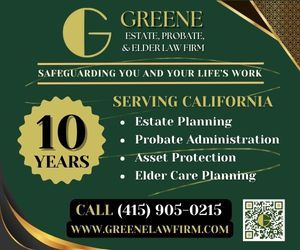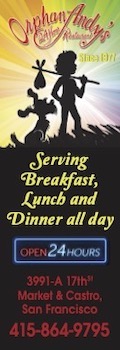Don We Now Our Ghoul Apparel
Before Pride, before the Castro or Folsom Street fairs, before the Dyke March, or any of the other major celebrations on LGBT San Francisco’s crowded social and cultural calendar, there was Halloween. Seventy-five years ago, when the “fruiters” were not allowed to congregate in public places or appear on city streets in attire “not belonging to his or her sex,” even the police recognized Halloween as our holiday.
As the journalist and historian Randy Shilts described it, the Chief of Police himself drove female illusionist José Sarria “to the center of North Beach that night, opening the car door politely for the elegantly gowned drag queen and giving the traditional send-off for the night’s activities. ‘This is your night—you run it.’ For that one night, the police let homosexuals roam the city freely, even if they wore dresses. But when the hours shifted from October 31 to November 1, the iron fist of Lilly Law would fall again.”
The center of the festivities in North Beach was the Black Cat Cafe, where Sarria performed his famous opera parodies. Using incessant threats, raids, and cancelled liquor permits, the police and the state’s Department of Alcoholic Beverage Control Board tried for years to shut the club. On October 30, 1963, barely a day before the annual Halloween party, the Board once again suspended its liquor license. The Halloween party went on the next night anyway, with nonalcoholic beverages, but the end was in sight.
The Black Cat closed forever in February 1964, but it was not forgotten. For many years, the City’s gay community grieved its demise with a memorial procession on Halloween from Romeo’s in the Haight, where Sarria sometimes performed, to the bar’s former location, where they placed a wreath of remembrance. Gays continued to celebrate Halloween in North Beach, especially along upper Grant Avenue. By the end of the decade, however, the neighborhood was overwhelmed by tourists and topless bars, so the festivities moved to Polk Street.
In the two decades since the Nob Hill Club, Polk Street’s first gay bar, opened in 1950—it was raided and closed in 1959—what became known as Polk Strasse, or Polk Gulch, on the Tenderloin’s western border had become San Francisco’s first “gay downtown,” with numerous clubs, restaurants, retail stores, travel agencies, and other businesses specifically serving the LBGT community.
The neighborhood’s annual Halloween celebrations began in 1970, the same year a group of 30 or so self-proclaimed “hair fairies” marched along Polk Street to commemorate the first anniversary of the Stonewall Riots. By 1976, the year that the Pride parade moved from Polk to Market Street, more than 70,000 partygoers and lookie-loos were coming to the neighborhood for Halloween.
The sheer size of the crowd, in both fancy dress and suburban drab, finally forced the police to close Polk Street to automobile traffic until revelers vanished into the dawn’s early light. The national interest that followed embarrassed some on the Board of Supervisors. They voted not to close the street for 1977’s Halloween celebration, but when both merchants and the police protested, Mayor George Moscone got the Board to reverse its decision.
An effort to keep Polk Street open to automobile traffic on Halloween in 1978 also failed. Unfortunately, that year’s ever larger crowd included not only the usual partygoers and onlookers, but also a large number of people who came simply to drink and to cause trouble. By night’s end, some 60 people were arrested for drunk and disorderly behavior, petty theft, gay bashing, smashing store windows, and looting a clothing store. The next year, Polk Street stayed open to cars, which shattered the party forever.
By then, the center of the festivities had moved to the Castro, where Halloween became a major social and cultural event. Revelers appeared in costumes of every imagination. These included Star Whores R U 1 2, Princess Letus, Hand Solo, C3JO, Tutu Fabulous Ballet Corps—whose lovely ballerinas all sported clone mustaches—Cone Heads, closets, enormous condoms, satyrs, fairies with gossamer wings, debutants of all ages in taffeta ball gowns, cowardly lions, scarecrows, tinmen and Totos, too.
After word got out about how wonderful the Castro’s Halloween party was, more and more people from all over the Bay Area travelled into the neighborhood for the spectacle. What became an annual endeavor to see how many men and women—costumed or otherwise—could crowd onto two city blocks by 2007, unfortunately, was attracting the same type of vandalism and violence that ended the festivities on Polk Street almost two decades before.
Remembering those earlier days, the City used the same strategy in the Castro to stop the outdoor revelry and the disorder that now came with it: in 2008, Castro Street stayed open for cars and busses. The great gatherings there for Halloween were no more. Fortunately, the merrymaking and joyousness of the holiday remain. Whether you celebrate as ghoulie, ghostie or long-leggedy beastie, look marvelous, be fabulous, and party on!
Bill Lipsky, Ph.D., author of “Gay and Lesbian San Francisco” (2006), is a member of the Rainbow Honor Walk board of directors.











Recent Comments